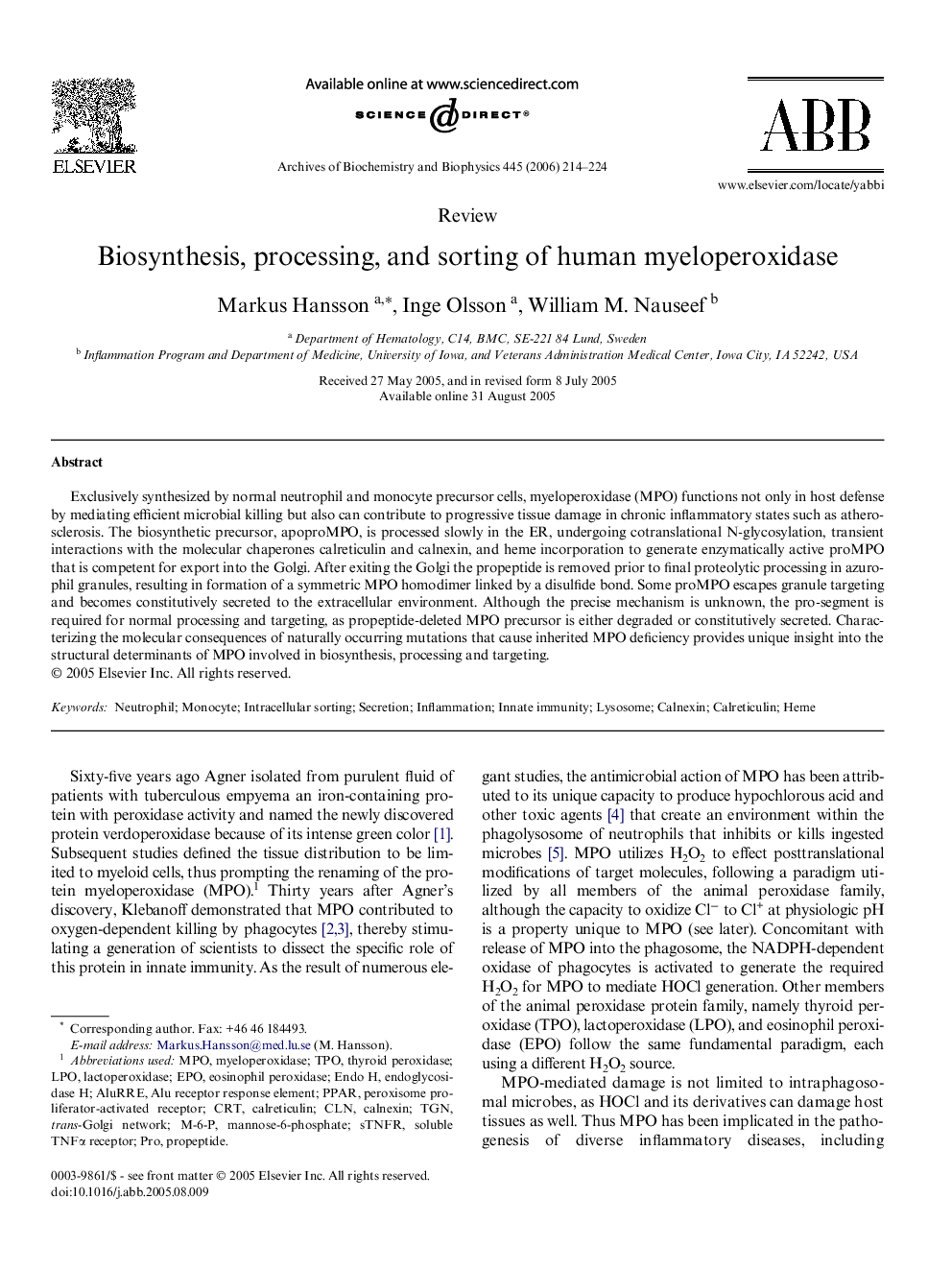| Article ID | Journal | Published Year | Pages | File Type |
|---|---|---|---|---|
| 1927599 | Archives of Biochemistry and Biophysics | 2006 | 11 Pages |
Exclusively synthesized by normal neutrophil and monocyte precursor cells, myeloperoxidase (MPO) functions not only in host defense by mediating efficient microbial killing but also can contribute to progressive tissue damage in chronic inflammatory states such as atherosclerosis. The biosynthetic precursor, apoproMPO, is processed slowly in the ER, undergoing cotranslational N-glycosylation, transient interactions with the molecular chaperones calreticulin and calnexin, and heme incorporation to generate enzymatically active proMPO that is competent for export into the Golgi. After exiting the Golgi the propeptide is removed prior to final proteolytic processing in azurophil granules, resulting in formation of a symmetric MPO homodimer linked by a disulfide bond. Some proMPO escapes granule targeting and becomes constitutively secreted to the extracellular environment. Although the precise mechanism is unknown, the pro-segment is required for normal processing and targeting, as propeptide-deleted MPO precursor is either degraded or constitutively secreted. Characterizing the molecular consequences of naturally occurring mutations that cause inherited MPO deficiency provides unique insight into the structural determinants of MPO involved in biosynthesis, processing and targeting.
